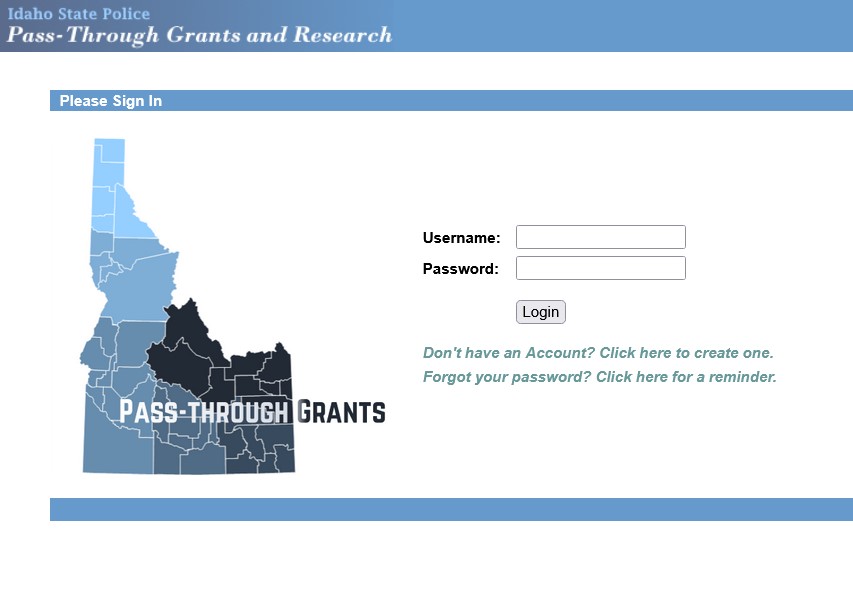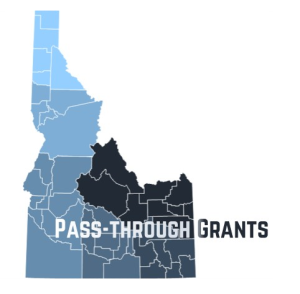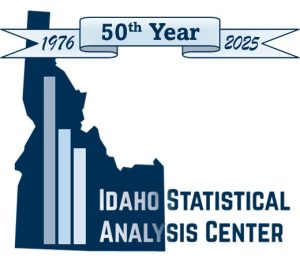Administering federal pass-through grant funds; conducting research and program evaluations through the Idaho Statistical Analysis Center (ISAC); serving on state and national criminal justice committees; and providing technical assistance.
Pass-Through Grants and Research (PGR) administers pass-through funding and houses the Idaho Statistical Analysis Center (ISAC). The Idaho State Police is the State Administering Agency for the following pass-through programs: Edward Byrne Memorial Justice Assistance Grant (JAG), STOP Violence Against Women Act (STOP VAWA), Sexual Assault Services Formula Program (SASP), and Residential Substance Abuse Treatment for State Prisoners (RSAT). PGR also manages the Prison Rape Elimination Act (PREA) JAG Reallocation Program.
Pass-Through Grants & Research
Kara Thompson
Supervisor
700 S. Stratford Dr,
Meridian, ID 83642

Grants Management System (GMS)
Grants Management System
Latest News
UPDATED: ISAC’s Crime in Idaho Data Dashboard Now Includes 20 Years of Idaho Crime Data
*Updated on 7/3/25 to correct an error in the percentage decrease in total offense rate from 2023 to 2024. The total offense rate decreased 6.3%,
ISAC Releases Study of School Resource Officers in Idaho
The Idaho Statistical Analysis Center (ISAC) is pleased to announce the release of its report on school resource officers (SROs) in Idaho. The study was
ISAC Releases New Research Briefs on Sexual, Intimate Partner Violence
The Idaho Statistical Analysis Center (ISAC) is pleased to announce the release of this year’s issues of its research briefs on sexual violence and intimate
PGR Events
Contact Information
Pass-Through Grants & Research
Idaho State Police
700 S. Stratford Dr.
Meridian, ID 83642
Email
Phone: 208-884-7040
Grants
Kara Thompson
PGR Supervisor
208-884-7045
Julie Brotzman
Byrne JAG & SASP
208-884-7041
Misty Kifer
STOP & RSAT
208-884-7054
Research & Data
Thomas Strauss
Statistical Analysis Center, Director
208-884-7047
Kourtnie Rodgers
Senior Research Analyst
208-884-7044


